Hawaiian South Shore November Newsletter
Share
Sukeroku Bento
The Sushi Dish You’ve Eaten Without Knowing!

One of the best things about traveling is trying new food—and nowhere has better food than Japan. Sushi is the first thing that pops to mind for most people when they think of eating in Japan, but what many people don’t know is that there are actually a number of different types of sushi. Two of the most popular are combined in something called a sukeroku bento—a dish you may not have heard of before, but have likely seen dozens of times in Hawaii.
A sukeroku bento is the classic sushi sampler bento you see at some grocery stores here in Hawaii, and literally every single gas station in Japan. It has two types of sushi in it—nori- maki and inari. Norimaki is the sushi most people think of—rice surrounded by nori seaweed wrapper, with a few extra nuggets inside for taste. In a sukeroku bento, these nuggets usually include a few small pieces of vegetable, egg, and maybe fish (typically fried). A sukeroku bento will typically have three or four of this type of sliced sushi roll in them.
Inari sushi is rice packed into a sweet, deep-fried tofu pouch. This type of sushi makes a nice contrast to the slightly less sweet norimaki in the bento. A sukeroku bento will usually have three or four inari sushi, in addition to the three or four norimaki.
While you have probably seen sukeroku bento in the store before, you may not know that it gets its name from a famous Japanese play that is part of the Kabuki collection of 18 plays! Just another example of how fun, interesting, and delicious it can be to explore a foreign culture! I get mine usually from Shirokiya.
Lessons to be Learned from a Japanese Typhoon
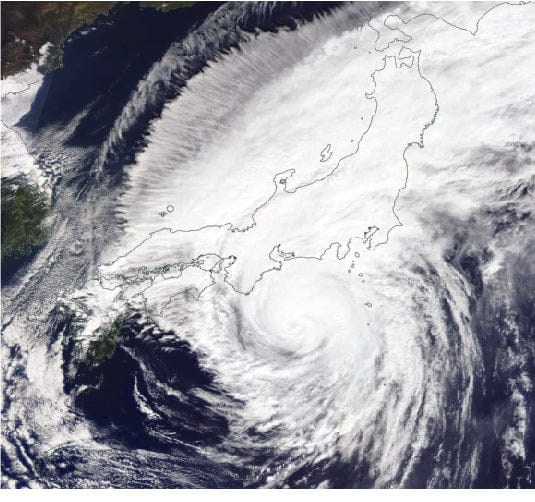
Our resident writer/adventurer Matt Rott recently returned from a swell strike to Japan, and came back with only good things to say about his trip. One of his most interesting observations was about the local attitude toward typhoons. We’ll let Matt explain in his own words.
If you look at a swell chart, you will notice that Japan, the Philippines, the US East Coast, Australia’s New South Wales, Brazil, and even the eastern coasts of the Hawaiian Islands all need some sort of anomalous storm activity in order to get swell. That’s because normal storms tend to track from the east to the west, sending swell to west-facing coasts, but normally not back toward the east. Typhoons, hurricanes, and cyclones are irregular storms, and are our best bet to get waves in east-facing areas, so when we went on a swell strike to Japan, we obviously went chasing a typhoon. We knew what we were getting into, and were ready to batten down the hatches if things got crazy.
Things did end up getting crazy, with the storm stalling right off the coast of Japan, and then slowly inching its way toward and even- tually over the country. We ended up scoring a few waves before the storm hit, although for the most part the swell was too large—but at least we managed to find a few nuggets amongst the chaos. But when the storm ran over Japan, that’s when things got interest- ing.
We had decided to stick around to see if we could get good conditions after the storm passed, so we hunkered down and got ready for the apocalypse. But as the Internet contin- ued to feed us updates about the storm’s progress and the expected raging wind and torrential rainfall, we seemed to be the only people who were paying attention. The day the storm actually hit, kids were still riding around on their bicycles, baseball players were walking leisurely home from games in their uniforms, and thousands of people were finishing up their partying from the Obon festival. It was as if nothing were amiss—like no humongous storm was bearing down on the island at all.
I mentally compared this to hurricanes I’ve been through in Hawaii and the US. Here at home, we line up at gas stations for hours to make sure our cars are filled, long before the hurricane even gets close to us. We empty grocery stores, stock up on canned food, fill our bathtubs with water, and board up our windows. And yet, there in Japan, in the direct path of a category 3 typhoon, people were out having picnics two hours before it hit!
I talked to our local host about this, and he just shrugged it off. The area we were in gets hit with an average of 10+ typhoons per year. It’s literally known as Typhoon Alley, and 41 super typhoons passed the region in a four-year period—nearly four times as many as the Atlantic had in the same time period. Like avalanches in Colorado, earthquakes in northern California, or tornados in Kansas, typhoons are just a way of life in Japan. New houses are all built tsunami- and typhoon-proof, and when the storms inevita- bly come, people just keep living their lives. If disaster strikes, then they deal with it—but until then, there doesn’t seem to be much worry about it.
I liked seeing this attitude. In life, we are all going to run into trouble from time to time—that’s just part of the human experience. But if we can take a lesson from the Japanese attitude toward typhoons, maybe we can learn not to worry so much. Sure, we need to be prepared for when disasters come—but in the meantime, there’s not much sense dwelling on the possibility. Life is too short to miss out on baseball games or bike rides or cultural festivals. Get busy living!
Reviews and Whats New
at Hawaiian South Shore
"This Board is One of the Fastest I've EVER ridden!"
After getting the first shipment of the CJ Nelson Parallax we knew we had to have a demo for the shop. It’s such an unusual shape , the rounded bottom that CJ has been researching , collaborating and refining for almost 2 years. The goal was to make one of the fastest board that you’ll ever ride. It all has to do with the rounded bell , this type of board is called a displacement hull. I read went on line and researched it and the more I read the more I really didn’t understand how it worked but one thing I know the board HAULS BUTT!
One person describe it as he was returning the board, “Its mental! I’ve never ridden a board like this before. I surfed it at rock piles and rode a waist high wave all the way to the inside of bowls. The next day I rode it at straight outs and rode the wave all the way to the inside of Renecks (one break just before Kewalos point). The board is super crazy fast and easy to turn!” He just went on and on about this board and I believe it because we had 5 other people that demoed the board and they were blown away. Another person interesting commented “I can surf it longer without getting fatigued and no neck pain. I guess because the board is light, easy to paddle.”
If you’re interested in demoing the board let me know. Mention you read this and I’ll waive the $10 daily demo fee, it’s just another way we like to Thank you for being a reward member and reading our newsletter.
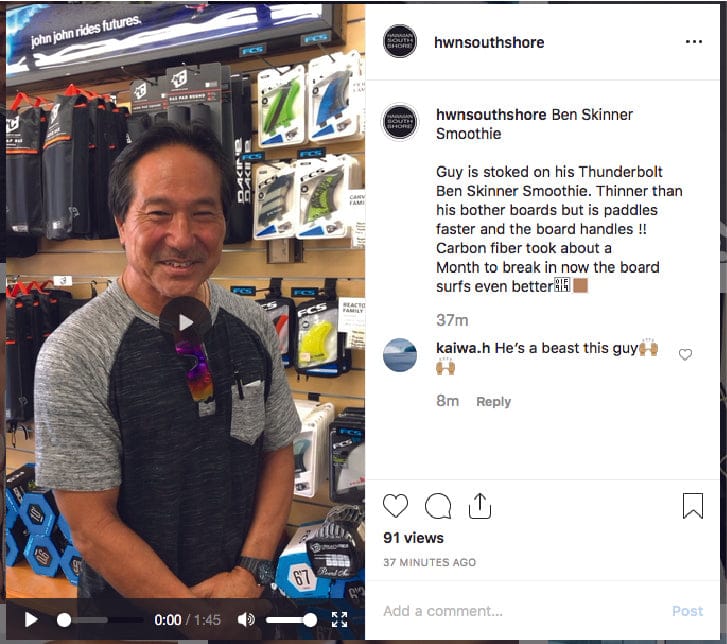
Guy: “After several months on the Smoothie, I gave away my two custom boards. When I first got the Smoothie, I didn’t think I’d be able to paddle into waves on it, but was pleasantly surprised to find that I could! At 60 years old, I’m surfing more than ever, thanks to this board. It holds speed as I bottom turn and cut back, but also supports my weight for noserides. And it has only gotten better as I’ve ridden it and gotten used to the flex!”
Parallax
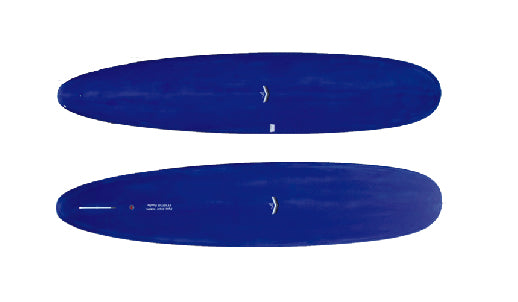
Allan: “The board is fast, it turns on a dime—its not your traditional single-fin longboard! It shreds like a shortboard! I actually connected one all the way from Rockpiles, through In-Betweens, to the inside of Bowls. On the crumbly sections I was able to do a floater—first time I’ve ever been able to do that on a single-fin longboard! The board is wide and stable so it doesn’t skip a beat, just keeps you cruising down the line. Even in mushy waves, it holds its speed. And the best part is that even though it’s an epoxy board, it doesn’t have the chatter that you feel with other epoxies. It likes a nice, clean, open, green face, and you can surf it aggres- sive, top-to-bottom.”
Jason: “The Parallax was awesome. It’s really fast, and I’m super happy! I didn’t feel any neck pain or fatigue, which was really important to me. I could surf longer on it than normal, maybe because of the weight of it. I didn’t have fatigue in my shoulders, which is normally a problem. And it rides really smooth!”
Mike: “I took the Parallax out, and I still don’t comprehend what happened! The maneuver- ability of this board at 9'6" is just crazy to me. I took it out at Pops, and made a section that I normally wouldn’t make on other boards. It turns really well. It needs to be ridden from the middle or back, but it turns surprisingly well. I used a Halo fin, and the way it handles and moves was very surprising for me. It’s only set up to run a single-fin, which is what I think should be ridden at Waikiki. But with the Thunderbolt setup in combination with the single fin...I’ll be taking one home soon, and I recommend it to anyone who wants to go up in length on a board, but still wants to be able to turn.”
JS Black Baron
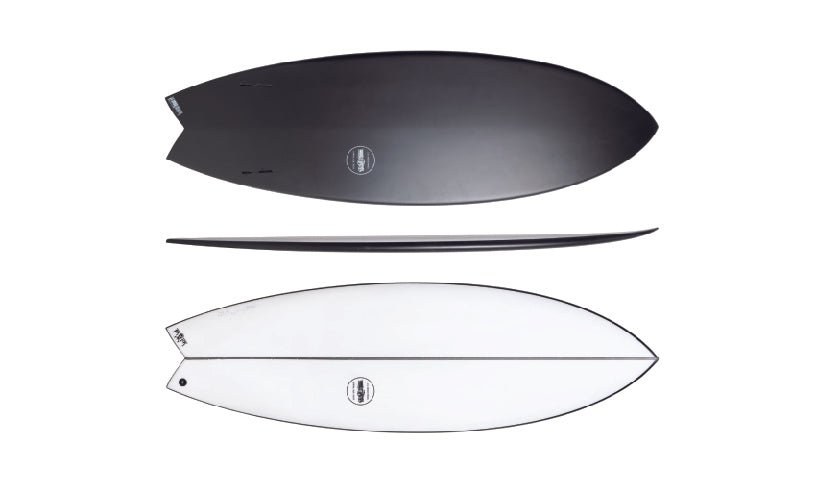
Irie: I just bought a 5'2" Black Baron and I love it so much. I took it out at Kewalos, and thought it would be the right board because it’s been pretty mushy lately. It was so fun. I was doing turns where I didn’t know I could turn, and surfing better than I usually do in small waves. I needed a small-wave board for small-wave comps, and this board really works in tiny waves. I love it so much.
PADI Project Aware
Working with Okinawan School Children to Preserve Coral Reefs
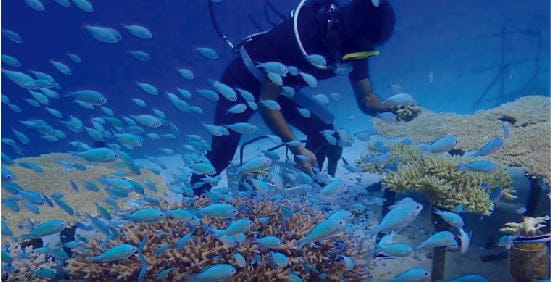
Coral reefs are a vital part of our ecosystem. Not only do they create amazing waves for us here in the tropics, but they also provide homes for fish and other sea creatures, filter and consume decayed material in the ocean water, and create oxygen through photosynthesis. Coral is an incredible organism that comes in a wide, colorful variety of subspecies. It is beauti- ful, helpful, and indicative of a healthy ocean ecosystem, and when you get a chance to look at live coral close up, you realize that it is actual- ly a living, moving organism that bends and flows like microscopic branches of trees in the currents and waves.
Unfortunately, coral is also extremely fragile and susceptible to damage. It can only exist in specific temperature ranges, with specific amounts of sunlight. Temperature changes in the ocean waters due to global warming can kill coral—even a change as small as one degree—and pollutants can also damage and kill coral, changing this incredible organism into a hard, colorless shell. Unfortunately, most of the coral here in Hawaii is damaged or dead, which means that we don’t get many opportuni- ties to experience live coral up close. Likewise, the Great Barrier Reef in Australia has under- gone extensive bleaching over the past decade, with some experts predicting it will die completely within a few generations.
Thankfully, there are certain people and groups out there who are doing their part to help keep coral reefs healthy. One such group is PADI’s Project AWARE. An environmental outfit run by the dive company PADI, Project Aware helps to educate people about environmental issues facing the oceans around the world, and empower local communities to help protect their coral reefs. The PADI Japan Project AWARE Volunteer Office in particular is working with National Geographic and school children in Okinawa to help protect their local coral reefs. Over the past 15 years, 25,000 coral seedlings have been grown and reintroduced to the coast- al areas around Okinawa. These seeds have spawned and taken root, laying the foundation for new, healthy coral reefs that will hopefully thrive in the future.
As people who spend so much of our time in the water, it is great to see that there are those who are helping to preserve our oceans and coral reefs. I encourage each of you to find ways to do your part, by volunteering with or donating to organizations such as this one, cleaning up beaches when you visit them, or simply being aware of the effects of any chemicals that you are taking into the water with you, or of the climate change that is caused by overconsump- tion. Let’s all work together to preserve our coral reefs for the next generation to surf, snorkel, and depend upon!
The Surfer's Secret to Happiness
A while back a visitor from the mainland stopped into Hawaiian South Shore and told me about an article called “The Surfer’s Secret to Happiness.” I eventually ended up finding the article, in “The New York Times,” and thought that it was pretty cool. It talks about how, as surfers, we only spend the smallest fraction of our time standing up on our boards and actually “surfing,” but how, despite the fact that most of our time is spent paddling, floating in the water, sitting at work daydreaming about waves, or eating breakfast before paddling out, we never stop being surfers the entire time.
The author was struggling with reactive arthritis when she discovered this about surfing, and found herself incapacitated. Unable to walk, she was also unable to pursue certain goals for awhile, such as becoming a nurse. She eventu- ally recovered from her disability, but in the process had learned from her observation of surfers that if people can learn to have that surfing attitude about everything in life—being happy with our pursuit during that majority of the time when we aren’t being successful or doing the thing that we intend to do—maybe we will be able to find true contentment, no matter what our situation is.
I did some research on the author of the article, and sadly discovered that she passed away this year. But the message of her article still rings true, and I think it’s a pretty good one for us to think about. I invite you all to search for the article online on The New York Times site—hopefully it will inspire you as much as it inspired me! And as always, you are also invited to stop into the shop anytime you feel like chatting about surf, waves, or life in general!
Folded Napkins and Unconscious Habits
For the longest time, my wife used to ask me “Why do you always take the napkin that is under your glass napkin and fold it in half?” To be honest, I didn’t know the answer. I just naturally did it, usually without thinking. But then one day, I was watching a Japanese TV show that talked about all of the many different habits of Japanese people. In one segment, they featured the people and customs of Okina- wa, where I grew up. Wow, did that show reveal a lot of things to me! After watching it, I realized that my time in Okinawa had influenced me greatly, and I’d picked up a number of lifelong habits from living there.
One of those habits is folding my napkin and placing it under my cup. Apparently, nearly all Okinawans do that! The reason why they do this is because Okinawa is very hot and humid, so the glasses that locals drink out of there often build up a lot of condensation, which inevitably drips down to the napkin. Folding the napkin in half makes it thicker so that it can soak up the condensation without getting completely saturated and wet through. That way, when you pick up your glass, the napkin under it won’t stick to the bottom!
It’s funny how we internalize habits like this based on the culture and customs of where we grow up, and often don’t even realize why we do them. Do you have a quirky habit that was inspired by your local culture? Next time you catch yourself doing it, share with your friends why you do so, and where the habit comes from. They will be stoked to learn something new, and might have a habit of their own to tell you about as well!
Foods that Give You Energy in the Day and Help You Sleep at Night
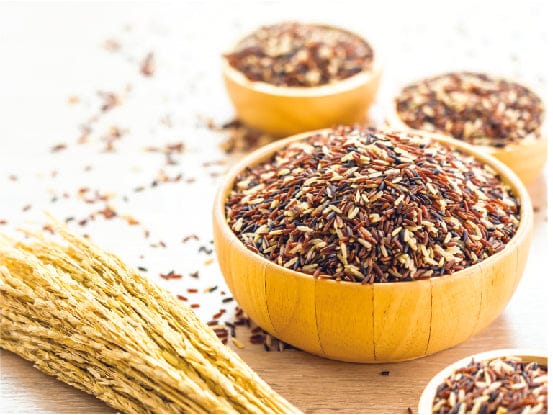
Between work, family, and surfing, life can be exhausting sometimes. But responsibilities keep coming, and so do swells—so it's up to us to find the energy to keep up. Fortunately, there are a few things we can do to make sure our energy stores are topped off. For one, getting enough sleep each night is essential. But beyond that, we can also benefit our bodies by eating the right foods. Here are five foods that can help give us energy during the day—and a couple more that can help us unwind in the evening, when we are ready to rest.
1) Brown rice: Carbs are the popular topic of the day when it comes to healthy eating. Too many carbs end up getting converted into fat, but if you don’t have enough of them, you won’t have the energy needed to support physical activity. The trick is to eat the right amount and the right kind of carbs—namely, complex carbs. In Hawaii and Japan, rice is a major source of carbs for many of us—but we tend too eat too much of it, and the wrong kind. Consider replacing your white rice with brown rice, which is the whole-grain version. Brown rice is more filling, which means you are less likely to eat too much. Plus, it is rich in fiber and nutrients. Finally, it has a much lower glycemic index score than white rice, which means that it digests more slowly, giving you steady energy through the day rather than spikes of energy followed by a crash.
2) Sweet potatoes: Again, carbs aren’t necessarily a bad thing, as long as they are used correctly (i.e., not consumed to excess, and preferably as complex carbohydrates). Sweet potatoes are a great example. Rather than eating the high-starch/low-fiber normal potatoes found in French fries, consider eating roasted or lightly sautéed sweet potatoes, which give you tons of nutrient, fiber, and healthy carbs to power your body throughout the day.
3) Eggs: While some people are against using any animal products, most agree that eggs are an incredible source of protein. In fact, in many nutritional circles, they are the protein against which all other proteins are measured. Protein helps to rebuild muscles that are broken down during exercise, and also helps to keep your appetite sated so that you don’t overeat less healthy foods. They are also rich in leucine and various types of vitamin B, all of which energize you and help your body function more efficiently. And all of this makes sense, if you consider that the majority of the egg is supercharged, nutrition- ally dense food for what would otherwise have been a growing embryo!
4) Nuts: Just as carbs aren’t necessarily bad for you if they are used correctly, fats are actually quite healthy too, as long as you eat the right kinds. Nuts are the right kind of fat, and can be super beneficial to your body. Fat burns slowly and steadily, providing energy for the long-term, which makes nuts a great fuel for extended periods of exercise (like marathon surf sessions). Nuts are also full of nutrients that your body needs. And the oils in them help coat your stomach and make you feel full so that you don’t overeat unhealthy snacks. Consider a few handfuls of almonds or cashews along with a banana before paddling out, and you will find that you have the energy you need to surf all day.
5) Green leafy vegetables: When we think about food that gives us energy, we often think of high-calorie foods (since calories are actually a measure of energy). But our bodies need more than just calories to function. We also need nutrients and vitamins that enable us to digest calories and turn them into energy that we can use for movement and life. Plus, these nutrients and vitamins help keep us healthy, repair damaged cells, and increase brain and body function in a variety of ways. Green leafy vegetables are some of the best sources of vitamins, which is why things like spinach, kale, and chard are considered superfoods. Iceberg lettuce, on the other hand, is NOT a superfood. It has very little to offer in terms of beneficial content, so pass over the bleached lettuce next time you build a salad, and go heavy on the spinach. After all, Popeye ate it for a reason!
6) Turkey: After a busy day of work and surf, you want to relax and get to sleep so you can wake up refreshed and do it all over again. Tryptophan is an amino acid found in turkey that helps increase the production of mela- tonin, the hormone that aids in falling asleep. As it turns out, there’s a reason you always take a nap after Thanksgiving lunch! Turkey is also high in protein, which is essential for rebuilding muscle after exertion.
7) Chamomile tea: A universal remedy for insomnia, chamomile tea is an herbal (non-caffeinated) tea that helps relax you and get you ready for bed. Not only does the warm liquid soothe your throat and body, but the chamomile apigenin, which is an antioxi- dant that binds to receptors in your brain to make you sleepy. As an added benefit, the flavones in the tea help reduce inflammation, which means less risk of cancer and heart disease.

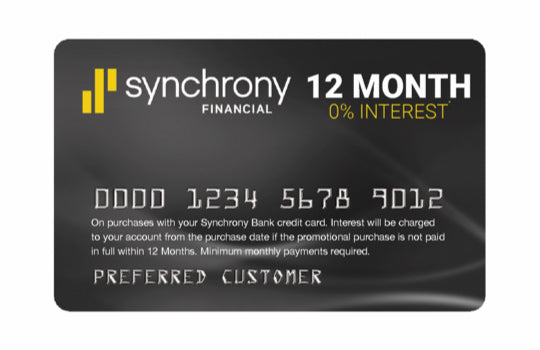
Buy a Surfboard and get 12 Months FREE when you use the Hawaiian South Shore Store Credit Card!
*Offer applies only to single-receipt qualifying purchases. No interest will be charged on the promo purchase if you pay the promo purchase amount in full within 12 Months. If you do not, interest will be charged on the promo purchase from the purchase date. Depending on purchase amount, promotion length and payment allocation, the required minimum monthly payments may or may not pay off purchase by end of promotional period. Regular account terms apply to non-promotional purchases and, after promotion ends, to promotional balance. For new accounts: Purchase APR is 29.99%; Minimum Interest Charge is $2. Existing cardholders should see their credit card agreement for their applicable terms. Subject to credit approval.
